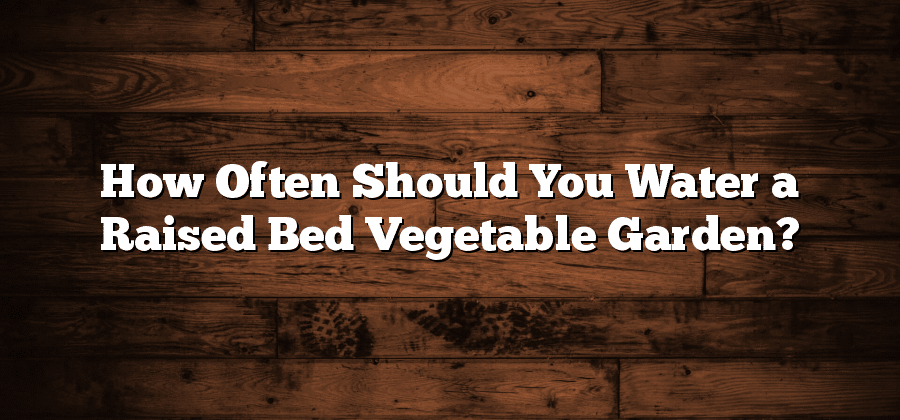Understanding the water needs of raised beds
Raised beds are an increasingly popular choice for gardeners seeking efficient and productive plant beds. Understanding the water needs of raised beds is essential for ensuring the health and vitality of the plants within them. Unlike traditional garden beds, raised beds have distinct characteristics that influence their water requirements.
One key factor to consider is the increased drainage capability of raised beds. The elevated nature of the soil allows for better water flow, preventing the risk of waterlogging and root rot. However, this also means that raised beds tend to dry out faster than ground-level beds. Consequently, gardeners need to be mindful of monitoring soil moisture levels and providing adequate hydration to their raised beds.
Factors influencing watering frequency
Factors influencing watering frequency in raised beds can vary depending on several key factors. One important consideration is the type of soil used in the raised bed. Different soil types, such as sandy or clayey soil, have different water-holding capacities. Sandy soil, for example, tends to drain water quickly, requiring more frequent watering to keep the plants adequately hydrated. On the other hand, clayey soil retains water for longer periods, necessitating less frequent watering.
Another factor to consider is the plant species being grown in the raised bed. Some plants have higher water requirements than others. For instance, leafy greens and herbs generally require more frequent watering, as they have shallow root systems and tend to dry out quickly. In contrast, plants like tomatoes and peppers have deeper root systems and can withstand longer periods between waterings. By considering these factors, gardeners can determine the optimal watering frequency that will sustain healthy growth and yield for their specific raised bed garden.
Identifying the signs of dehydration in plants
Plants can be remarkably resilient, but they depend on an adequate supply of water to thrive. Without sufficient water, they can suffer from dehydration, which can have detrimental effects on their growth and overall health. As a gardener, it is crucial to be able to identify the signs of dehydration in plants so that timely intervention can be undertaken to rectify the situation.
One of the first signs of dehydration in plants is the wilting of leaves. When plants do not receive enough water, their cells lose turgidity, causing the leaves to droop and appear limp. This can be observed in both young and mature leaves, and often starts from the tips and edges before progressing towards the center of the leaf. Additionally, the leaves may also become discolored, turning yellow or brown, as a result of inadequate water supply. By closely monitoring the foliage and recognizing these telltale signs, gardeners can take prompt action to properly hydrate their plants and prevent further damage.
The importance of consistent moisture levels
Consistent moisture levels play a vital role in the health and growth of plants in raised beds. When it comes to watering, maintaining a consistent and adequate supply of moisture is crucial. Inconsistent or inadequate watering can lead to various issues like wilting, stunted growth, and even plant death.
Plants in raised beds have limited access to water compared to those grown directly in the ground. Therefore, it is essential to monitor and regulate moisture levels carefully. By consistently providing plants with the right amount of water, you can ensure that their roots stay hydrated, allowing nutrients to be absorbed efficiently. This, in turn, promotes healthier plant development and increases their ability to resist pests and diseases. Consistent moisture levels also help in maintaining optimal conditions for the activity of beneficial microorganisms in the soil, providing a conducive environment for overall plant vitality.
Efficient watering techniques for raised beds
One efficient watering technique for raised beds is drip irrigation. This method involves using a network of tubes or pipes that deliver water directly to the plant’s root zone. This targeted approach ensures that water is not wasted through evaporation or runoff. Drip irrigation also helps to prevent weed growth by minimizing moisture on the soil surface. By providing a slow and steady supply of water, this technique promotes healthy root development and reduces the risk of overwatering.
Another effective technique for watering raised beds is using a soaker hose. This porous hose is laid along the base of the bed and releases water slowly and evenly into the soil. The soaker hose allows for deep watering, reaching the roots of the plants without wetting the leaves. This method helps conserve water by reducing the amount lost to evaporation and runoff. Soaker hoses can be easily adjusted to accommodate the specific watering needs of different plants, making them a versatile and efficient option for raised bed gardening.






